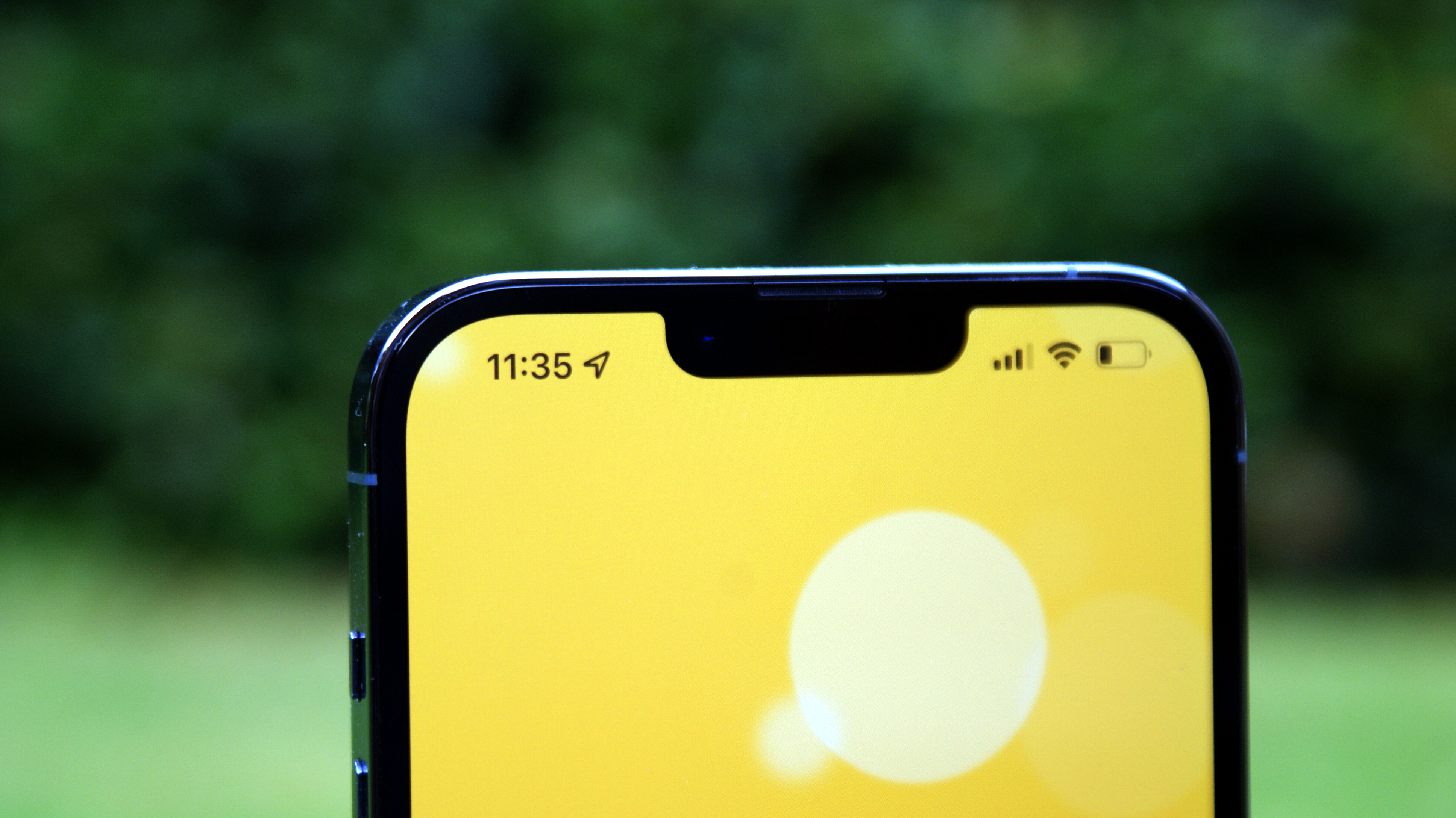We've seen the iPhone 14 Pro's rumored notch before – on this 2019 Samsung Galaxy
As the Galaxy S10 5G foretold

It's no secret that Apple tends to take its time when it comes to implementing new technologies and talk of a new cutout on the iPhone 14 Pro line, instead of the distinctive notch has encouraged speculation about how Apple's take on the tech will actually look; except, we don't have to speculate, Samsung already did it, three years ago.
As is always the case with Apple, what might seem like a small design change between smartphone generations when it comes to other manufacturers feels far more significant when we're talking about the influential iPhone.
Numerous sources, including established Apple analysts like Ming-Chi Kuo and Mark Gurman have stated that the rumored iPhone 14 Pro and iPhone 14 Pro Max will finally ditch the notch entirely, in exchange for a punch-hole camera/cutout.
Going, going, gone

The notch was a huge talking point when Apple first introduced the feature on the iPhone X back in 2017, serving as the housing for the advanced front-facing camera system that also introduced Face ID to the world; as the phone's screen-covered front no longer left room for the series' once-signature circular Touch ID-laden home button.
This design element then remained unchanged on every subsequent iPhone generation, until 2021's iPhone 13 line, where the company squeezed the same components (including both front-facing camera and Face ID) into a notch that was 20% smaller than previously.
While the standard iPhone 14 and larger iPhone 14 Max are expected to retain a similar notch to the iPhones you can buy right now, this year's Pro models will reportedly sport an unusual dual cutout arrangement that finally breaks away from the display's bezel.
This is true. It looks like one wide pill shaped cutout. Having that separation would look odd during use. https://t.co/SrAtYQsENxAugust 31, 2022
While early depictions of this new cutout show two disparate 'islands' of imaging hardware poking through the pixels, the latest word from sources (since corroborated by the likes of Gurman) point to a software solution that voids the visible gap in between the hardware elements to produce what appears like a continuous pill-shaped front-facing camera array, retaining the components necessary to pull off Face ID.
Get daily insight, inspiration and deals in your inbox
Sign up for breaking news, reviews, opinion, top tech deals, and more.
Back to the future

When we first saw these interpretations of a 'new' pill-shaped dual front-facing camera unit with depth-sensing capabilities, scanning through the back catalogue of notable phones brought up 2019's notable, if forgettable, Samsung Galaxy S10 5G.
Unlike the 5G moniker as it exists in phone names today, back in 2019 – when this next-gen networking technology was barely out of the gate – the S10 5G arrived as a wholly different beast to the standard Galaxy S10 and Galaxy S10 Plus; delivering a larger display, more cameras and more advanced technologies than the rest of the range including, you guessed it, 5G support.
While numerous Android phones have served up dual-front-facing pill-shaped camera cutouts in the intervening years, the Galaxy S10 5G was the first to serve up the design and stands out for being one of the few with a module that also offered depth-sensing capabilities – something that Apple's chunkier, notched front-camera systems have supported since the beginning.
Doing it quick or doing it well
In a way the Galaxy S10 5G's front pill-shaped camera cutout was ahead of its time – the iPhone 14 Pro's expected cutout proves this; but Apple is seldom first when it comes to introducing new technologies onto smartphones, and yet it's the brand that's most often remember and associated with them.
Face ID likely wouldn't have gained the same traction, trust and sense of legitimacy it now wields, if it had been pitched to consumers by any other phone maker; falling by the wayside in the same way 3D screens and pop-up cameras have fallen out of favor.
Time and again, we've seen Apple wait to introduce an established technological innovation until the company is 99% sure that it can meet their understandably high expectations: high refresh rate displays, contactless payments, fingerprint sensors, wireless charging – all features that other phone makers had in play before the iPhone and yet 'ProMotion', 'Apple Pay', 'Touch ID' and 'MagSafe for iPhone' are all terms that the average consumer is far more likely to know than any other phone maker's equivalent in-house branding.
If the Galaxy S10 5G gave us a glimpse of what a pill-shaped depth-sensing cutout camera system can do, the iPhone 14 Pro line looks set to bring things into sharp focus.

Alex joined as TechRadar's Senior Phones Editor in June 2022, but brings over a decade's worth of experience to the role, with an expertise in smartphones, tablets and wearables. He's covered keynotes hosted by the biggest brands and attended the launches for some of the most influential mobile products of the last few years. His experience was amassed at some of the most reputable consumer technology publications out there, including GSMArena, TechAdvisor and Trusted Reviews.